|
I am a postdoctoral research associate in the Kavraki Lab at Rice University, working with Prof. Lydia Kavraki on task and motion planning. I obtained my Ph.D. from the Department of Electrical and Computer Engineering at University of California, San Diego. I worked on "Learning Environment and Dynamics Representations for Autonomous Robot Navigation" under the direction of Prof. Nikolay Atanasov at the Existential Robotics Laboratory. During my Ph.D., I am grateful to collaborate with Prof. Michael Yip, Prof. Melvin Leok, Prof. Eduardo Montijano and Prof. Quan Nguyen. A long time ago, I worked as a software engineer at Microsoft. I obtained my M.S. degree from Oregon State University, Corvallis, Oregon and B.S. degree from Hanoi University of Science and Technology, Hanoi, Vietnam. Email / Google Scholar / Github / LinkedIn |

|
|
|
|
I am interested in robotics, machine learning, control theory, and optimization. My work focuses on robots' understanding of the environments, e.g. probablistic mapping, navigation and exploration; and of their own dynamics model, e.g. robot dynamics learning, model-based reinforcement learning, and learning from demonstration. I am also interested in modeling uncertainty in map representations and robots' dynamics for safe and active planning and control. |
|
|
| Projects for robot dynamics learning and control |
|
|
Thai Duong, Abdullah Altawaitan, Jason Stanley, Nikolay Atanasov Journal version, Transactions on Robotics , 2024. Honorable Mention of the 2024 T-RO King-Sun Fu Memorial Best Paper Award website / video / arxiv / code Conference version, Robotics: Science and Systems (RSS), 2021. website / video / arXiv / code The dynamics of many robots are described in terms of their generalized coordinates on a matrix Lie group, e.g. on SE(3) for ground, aerial, and underwater vehicles, and generalized velocity, and satisfy conservation of energy principles. This paper proposes a (port-)Hamiltonian formulation over a Lie group of the structure of a neural ordinary differential equation (ODE) network to approximate the robot dynamics. In contrast to a black-box ODE network, our formulation guarantees energy conservation principle and Lie group's constraints by construction and explicitly accounts for energy-dissipation effect such as friction and drag forces in the dynamics model. We develop energy shaping and damping injection control for the learned, potentially under-actuated Hamiltonian dynamics to enable a unified approach for stabilization and trajectory tracking with various robot platforms. |
| Euler VI |
Scott Beck*, Chuong Nguyen*, Thai Duong, Nikolay Atanasov, Quan Nguyen International Conference on Robotics and Automation (ICRA), 2025. pdf / video / code Performing acrobatic maneuvers involving long aerial phases, such as precise dives or multiple backflips require accurate state predictions over long horizons with multiple contacts and extended flight phases. While most existing trajectory optimization (TO) methods rely on Euler or Runge-Kutta integration with high accumulated errors over long planning horizons, our whole-body TO method uses variational integration (VI) and full-body nonlinear dynamics for long-flight aggressive maneuvers. Our approach preserves energy and momentum system by design and reduces prediction error by 2 − 10 times while achieving similar planning time. We demonstrate long-flight triple backflips on a quadruped A1 robot model and backflips on a bipedal robot with only few degrees of landing angle errors. |
|
Chuong Nguyen, Abdullah Altawaitan, Thai Duong, Nikolay Atanasov, Quan Nguyen Robotics and Automation Letters (RA-L), 2024. video / arXiv / Code Achieving both target accuracy and robustness in dynamic maneuvers with long flight phases has been a significant challenge for legged robots. We propose a novel learning-based control approach consisting of model learning and model predictive control (MPC) utilizing an adaptive frequency scheme. We learn a model directly from experiments, accounting not only for leg dynamics but also for modeling errors and unknown dynamics mismatch in hardware and during contact. Additionally, learning the model with adaptive frequency allows us to cover the entire flight phase and final jumping target, enhancing the prediction accuracy of the jumping trajectory for MPC. |
|
Abdullah Altawaitan, Sambaran Ghosal, Jason Stanley, Thai Duong, Nikolay Atanasov Accepted to ICRA, 2024. website / arXiv / code This paper develops an approach for learning robot dynamics directly from point-cloud observations, removing the need and associated errors of state estimation, while embedding Hamiltonian structure in the dynamics model to improve data efficiency. We design an observation-space loss that relates motion prediction from the dynamics model with motion prediction from point-cloud registration to train a Hamiltonian neural ordinary differential equation. We demonstrate dynamics learning and tracking control on a real nonholonomic wheeled robot |
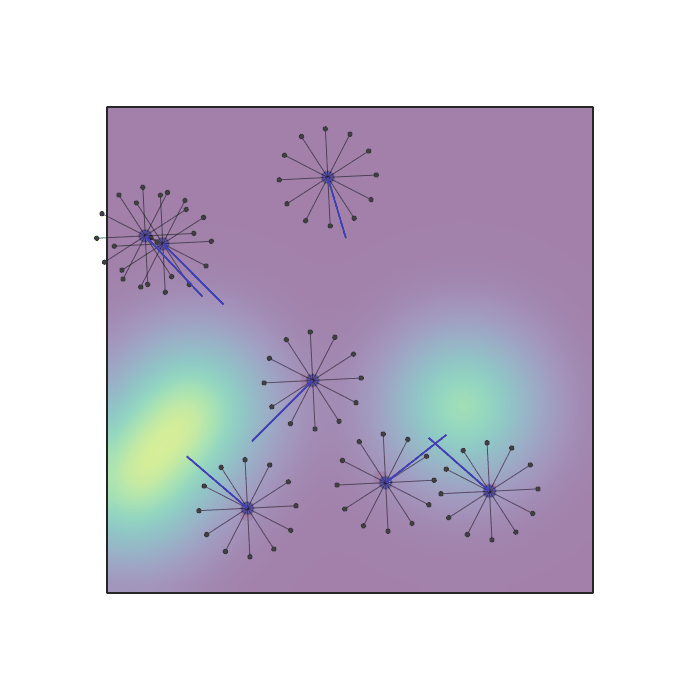
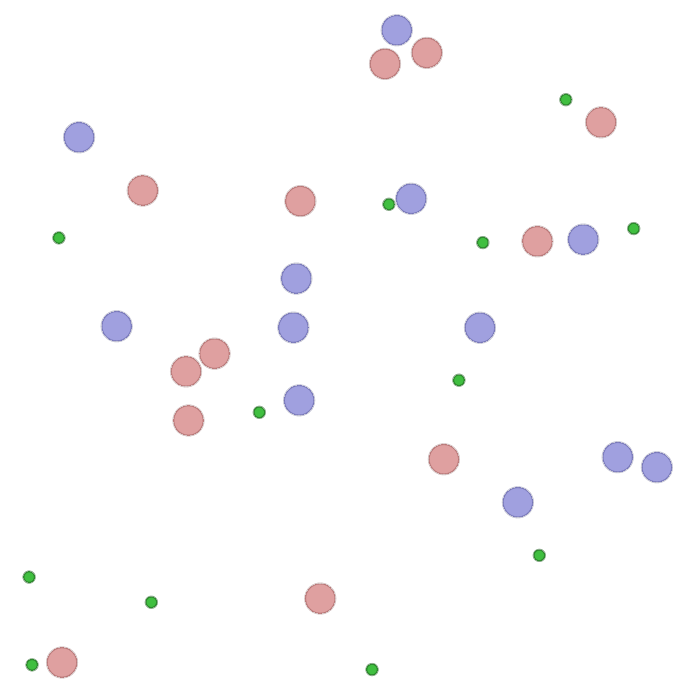
|
Eduardo Sebastian, Thai Duong, Nikolay Atanasov, Eduardo Montijano , Carlos Sagues Journal version, submitted to T-RO. . website / arXiv / code We propose a physics-informed reinforcement learning approach able to learn distributed multi-robot control policies that are both scalable and make use of all the available information to each robot. It imposes a port-Hamiltonian structure on the control policy, capturing the networked nature of robot team interactions and uses self-attention to handle time-varying information at each robot from the interaction graph. We present a soft actor-critic reinforcement learning algorithm to train our self-attention port-Hamiltonian control policy. Eduardo Sebastian, Thai Duong, Nikolay Atanasov, Eduardo Montijano , Carlos Sagues Accepted to ICRA'23. . website / arXiv / code We propose a port-Hamiltonian description of the multi-robot system to exploit universal physical constraints in interconnected systems and achieve closed-loop stability. We represent a multi-robot control policy using an architecture that combines self-attention mechanisms and neural ordinary differential equations. The former handles time-varying communication in the robot team, while the latter respects the continuous-time robot dynamics. Our representation is distributed by construction, enabling the learned control policies to be deployed in robot teams of different sizes. |
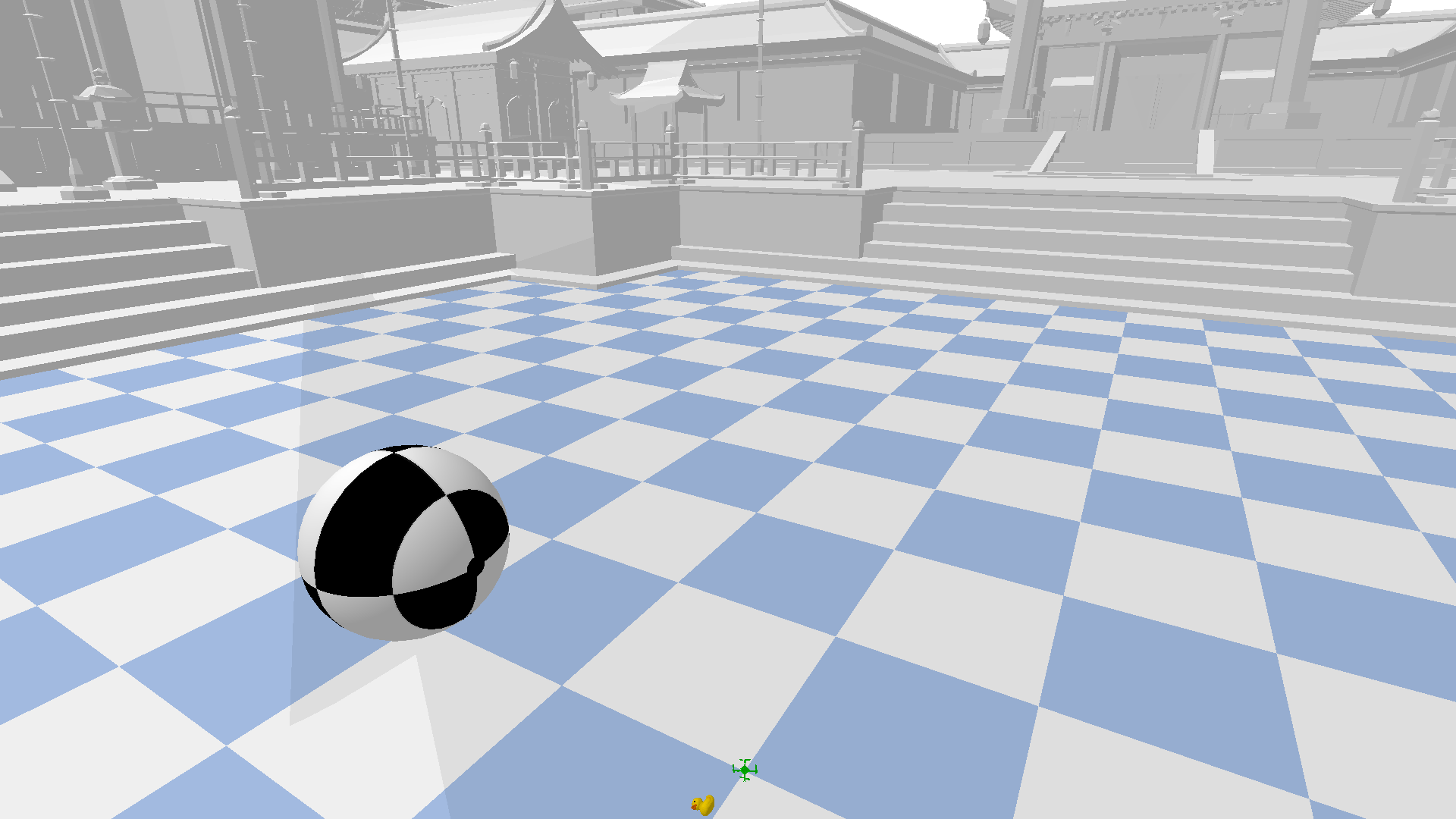
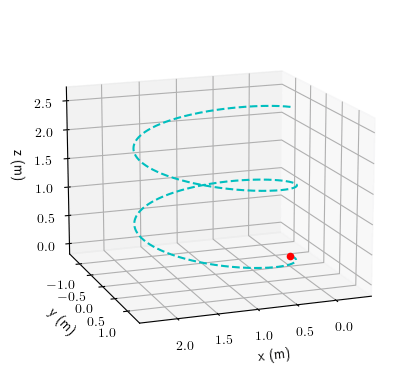
|
Thai Duong, Nikolay Atanasov Accepted to L-CSS, 2022. website / video / arXiv This paper develops geometric adaptive control with a learned disturbance model for rigid-body systems, such as ground, aerial, and underwater vehicles, that satisfy Hamilton's equations of motion over the SE(3) manifold. Our design consists of an offline disturbance model identification stage, using a Hamiltonian-based neural ordinary differential equation (ODE) network trained from state-control trajectory data, and an online adaptive control stage, estimating and compensating the disturbances based on geometric tracking errors. We demonstrate our adaptive geometric controller in trajectory tracking simulations of fully-actuated pendulum and under-actuated quadrotor systems. |
| Projects for environment understanding and navigation |
|
Zhirui Dai, Arash Asgharivaskasi, Thai Duong, Shusen Lin, Maria-Elizabeth Tzes, George Pappas, Nikolay Atanasov International Conference on Robotics and Automation (ICRA), 2024. arXiv This work aims to leverage these new capabilities with an efficient task planning algorithm for hierarchical metric-semantic models. We consider a scene graph representation of the environment and utilize a large language model (LLM) to convert a natural language task into a linear temporal logic (LTL) automaton. Our main contribution is to enable optimal hierarchical LTL planning with LLM guidance over scene graphs. To achieve efficiency, we construct a hierarchical planning domain that captures the attributes and connectivity of the scene graph and the task automaton, and provide semantic guidance via an LLM heuristic function. To guarantee optimality, we design an LTL heuristic function that is provably consistent and supplements the potentially inadmissible LLM guidance in multi-heuristic planning. |
|
Thai Duong, Michael Yip, Nikolay Atanasov Accepted to IEEE Transactions on Robotics (T-RO), 2022 website / video / arXiv / code This paper focuses on online occupancy mapping and real-time collision checking onboard an autonomous robot navigating in a large unknown environment. We develop a probabilistic formulation based on Relevance Vector Machines, allowing probabilistic occupancy classification and supporting autonomous navigation. We provide an online training algorithm, updating the sparse Bayesian map incrementally from streaming range data, and an efficient collision-checking method for general curves, representing potential robot trajectories. 
|
|
|
Thai Duong, Nikhil Das, Michael Yip, Nikolay Atanasov International Conference on Robotics and Automation (ICRA), 2020 website / video / arXiv / code We propose a new map representation, in which occupied and free space are separated by the decision boundary of a kernel perceptron classifier. We develop an online training algorithm that maintains a very sparse set of support vectors to represent obstacle boundaries in configuration space. We also derive conditions that allow complete (without sampling) collision-checking for piecewise-linear and piecewise-polynomial robot trajectories. |
| Projects for robot safety |
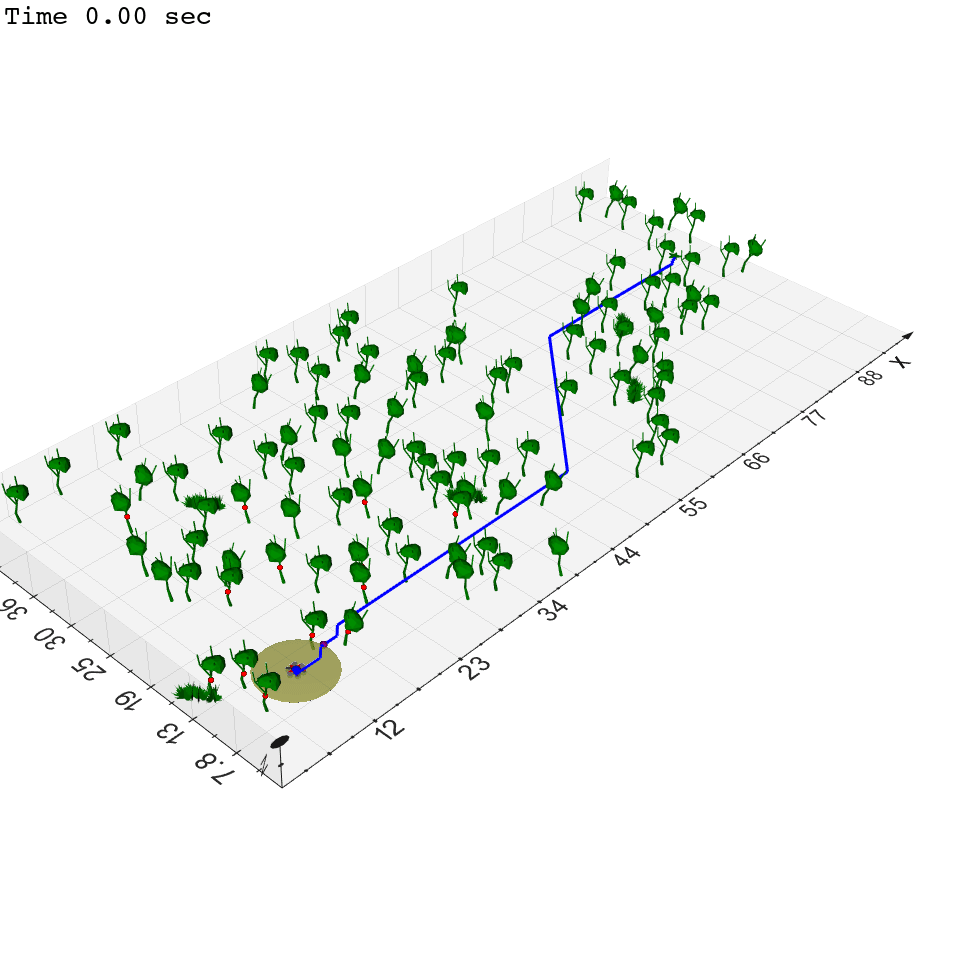
|
Zhichao Li*, Thai Duong*, Nikolay Atanasov Learning for Dynamics and Control (L4DC), 2022. *Equal contribution. Journal version accepted to OJ-CSYS Special Issue: Intersection of Machine Learning with Control, 2022, as invited paper. website / video / arXiv (L4DC) / arXiv (OJ-CSYS) This paper proposes techniques to learn the dynamics models of a mobile robot from trajectory data and synthesize a tracking controller with safety and stability guarantees. We use a dataset of state-control trajectories to train a translation-equivariant nonlinear Hamiltonian model represented as a neural ordinary differential equation (ODE) network. The learned Hamiltonian model is used to synthesize an energy-shaping passivity-based controller and derive conditions which guarantee safe regulation to a desired reference pose. Finally, we enable adaptive tracking of a desired path, subject to safety constraints obtained from obstacle distance measurements. |
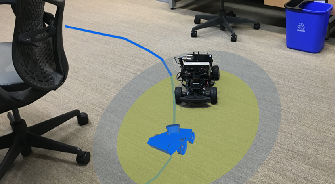
|
Zhichao Li, Thai Duong, Nikolay Atanasov ArXiv, 2020 arXiv We consider a control-affine nonlinear robot system subject to bounded input noise and rely on feedback linearization to determine ellipsoid output bounds on the closed-loop robot trajectory under stabilizing control. A virtual governor system is developed to adaptively track a desired navigation path, while relying on the robot trajectory bounds to slow down if safety is endangered and speed up otherwise. The main contribution is the derivation of theoretical guarantees for safe nonlinear system path-following control and its application to autonomous robot navigation in unknown environments. |
